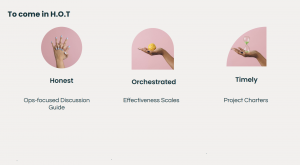DesignOps Summit 2021 – When Design Ops Comes in H.O.T.: A Tale of a Transformed Design Org (Briana Thomas & Christina Rodriguez)
Briana Thomas & Christina Rodriguez – Senior Design Producer’s at ZenDesk
Who is this talk for?
Anyone who is looking for structure in the middle of madness
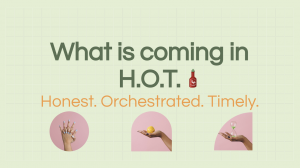
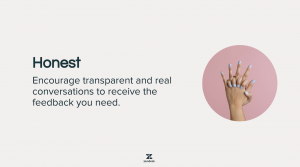
Honest – Emphasize this with the tools that we have in design
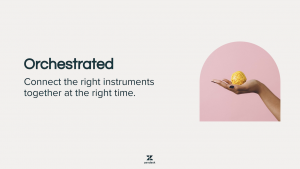
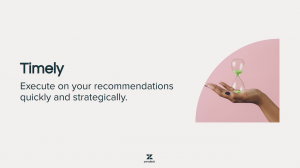
We know we have competing responsibilities, but we also want to execute on our Ops recommendations quickly to highlight the importance of DesignOps and create clout around it
Within our first 30 days we conducted an audit around people, practice, and portfolio
Looking at our competing priorities as an Ops team of two at the time and decided what are some of the things that we need to really focus on as an Ops group
- It was – Gaining respect and trust as a newly formed group and decided to focus on one thing – UX Weekly
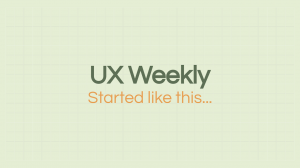
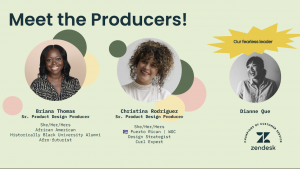
We were introduced to the team as the brand-new Producers
- No one on the team has interacted with Producers and did not know what our role was
- A place designed for our design leadership and peers to inform each other on the current state of affairs and project work
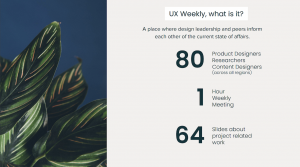
UX Weekly – Example slide
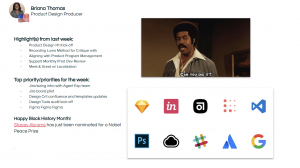
Highlights from last week and other things we’re working on to inform the team about our top priority for the next week – a visual version of a stand-up
- To make sure that the team was on board with the items that we prioritized – “Are you picking up what I’m putting down?”
We were seeing great work from our teams everybody was contributing they were showing us their user flows, updates to their experiences
- Great content and we were hearing great feedback from our team
- The designers took pride in showcasing their work to our different team members
- But overtime things started changing (we started seeing more pictures of dogs (we love dogs and hearing about them) but then we started seeing pictures of SPAM on a slide and decided it might be time to depart with what UX Weekly as we knew it
That’s when we decided to come in H.O.T
How did we foster honest and real conversations to receive the feedback that we needed to come up with real recommendations to fix UX Weekly?
- We encourage our honest conversations through an Ops focused discussion guide
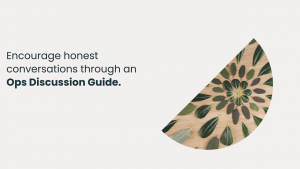
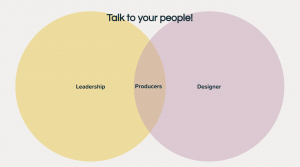
- We must talk to our people – we are the linchpin between leadership and our designers
- We must make sure that our recommendations meet all these different audiences
Example
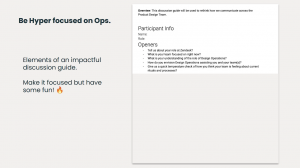
Be hyper focused on Ops in your discussion guide
Here are some elements of a good discussion guide
- Have strong openers
- What is your role?
- Where do you focus?
- Make sure to include some water cooler conversations
- Ex: How do you like coffee?
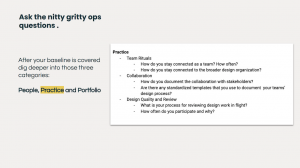
These are examples (above) that you can be including in your ops focused discussion guide
Ask the nitty gritty opts questions – this is our opportunity space
- Does this team ritual work?
- Where are the areas of opportunity?
- What are things that you’ve seen in other places
- Great place for us to highlight what we need to be successful at our job
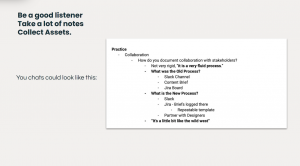
Be a good listener and take a lot of notes and collect assets
- Start figuring out what processes worked
- What things were super fluid?
- Where are people having discussions about content (slack, email, zoom etc.)?
- Where are you over processing the process?
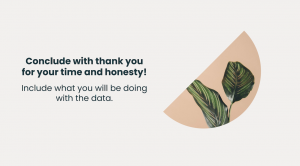
Conclude with a thank you and inform them on what you will be doing with the data
- Always make sure that you’re setting your expectations and realistic goals
- We want to make sure that our people know that they have been heard and there will be actions taken
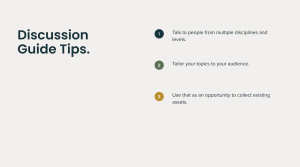
Tailor your topics to your audience
- Discussion guides will be different depending on your audience
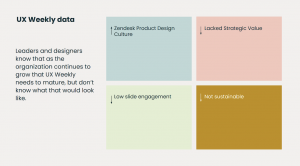
When we did our discussion guide, we found that people thought the culture was great but lacks strategic value, or low slide engagement, and it wasn’t sustainable
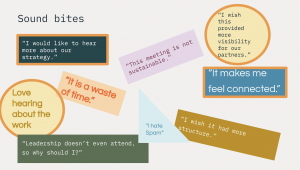
Some of the sound bites were areas of improvement but we also wanted to highlight the things that were going well or things that we wanted to amplify to the rest of the organization (highlighted in orange)
How do we, as designers, take the positives but also make room for those improvements and make it all make sense?
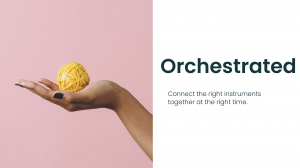
We come in orchestrated, and we connect all those instruments together at the right time
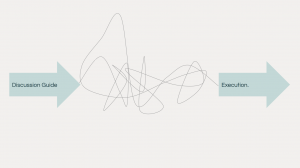
We needed to get to execution
- How do we as new design Ops people to an organization advocate for ourselves, our role, and ground the data that we gather into real time recommendations
We created an effectiveness scale
- a way for us to string all of this together to let it talk and advocate for itself
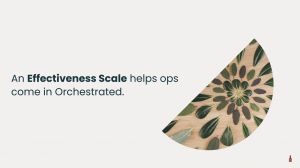
- An effectiveness scale helps Ops come in orchestrated because it shows that we had a methodology behind our process that we were grounding our recommendations in the real time data we received from our team
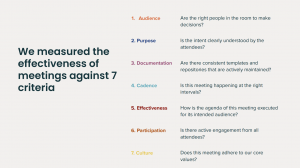
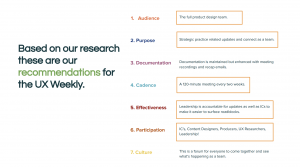
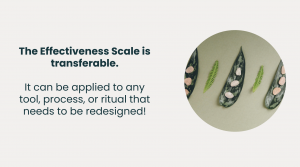
Tool Effectiveness Scale
We also need to evaluate the current state of our tools across our team, but we had to change some of those criteria to fit the needs of tools and what we were trying to evaluate
- What was the purpose of the tool?
- Who was the user?
- What was the desired output for it?
- Level of effort – is it is it difficult for people to on board onto this tool?
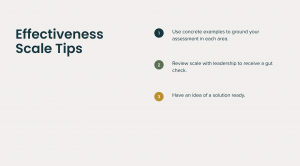
Use examples to ground your assessment in each area
- Sound bites helped make our case stronger for our recommendations
Review the scale with your leadership to receive a gut check
- bring them along the journey of what you’re evaluating so they understand the need to take on your recommendations
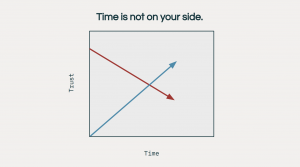
We need to make sure that we act quickly and strategically BUT we all know time is not on our side
As we continue to wait, to act on our recommendations, trust can go down, and usually does
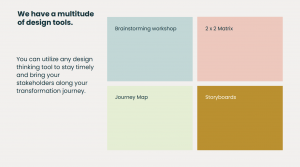
However, the Project Charter is always tried and true for accountability on our teams and for Ops folks
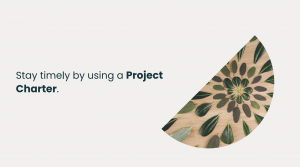
We wanted to make sure that we were not only using the tools that we were recommending to our designers but we wanted to exemplify what good practices look like and how when you document all these things up front – it results in a timely, well thought out execution at the end
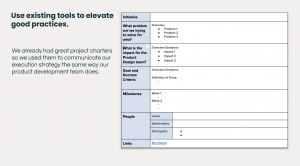
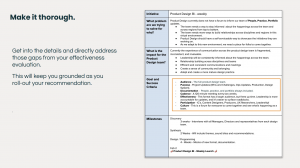
Make it thorough
- What problems are you solving for?
- What is going to be the impact of those goal and success criteria
- Make sure those maps back to that effectiveness scale so the ecosystem of documentation talks to one another
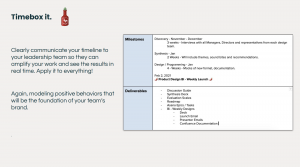
Time box it
- Clearly communicate your timelines
- Make sure you set up realistic milestones
- What is it going to take to design that?
- Make sure you factor in your feedback
- Be very deliberate about what your deliverables are
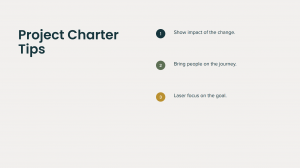
Project Charter Tips
- Show the impact of the change
- If you do X, it will do Y
- Make sure that you can quantify with real statistics
- Bringing people on the journey
- You’re going to get a lot more buying
- You’re going to get more participation
- They’re going to understand our roles so much better
- Stay laser focused on the goal
So, what came out of all this work? – A new way of gathering as a team
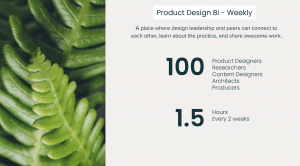
Outcomes created out of our effectiveness scale
- Better documentation
- Better culture and connection
- Curated Agendas
- Practices updates
